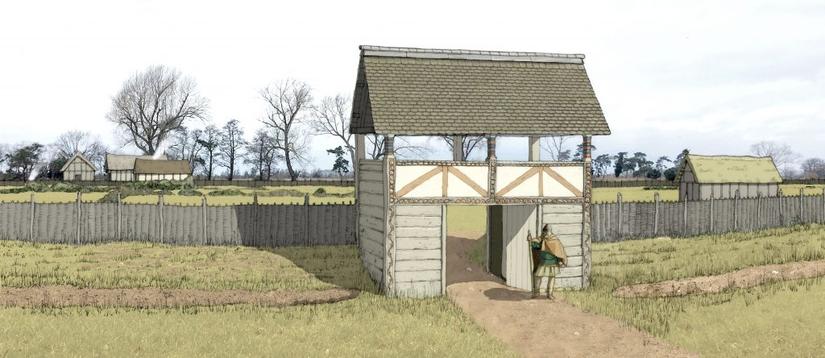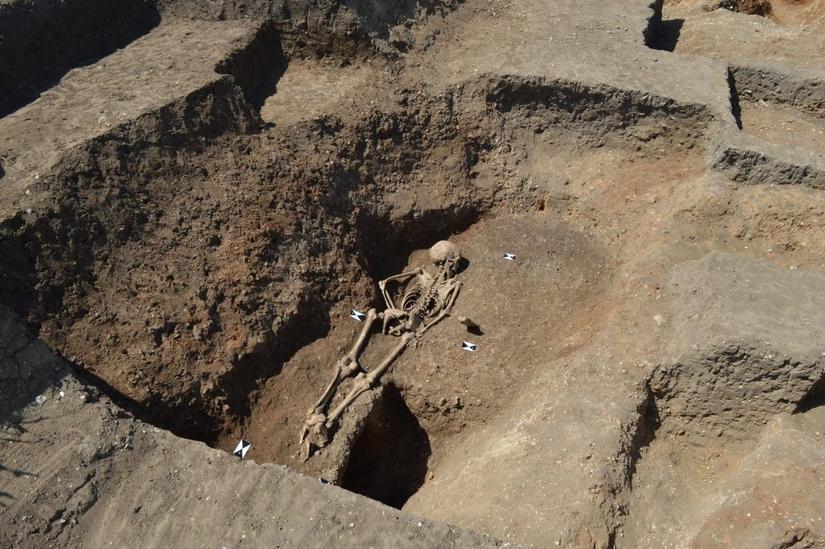An unusual burial and a tragic story from Early Medieval Cambridgeshire
Warning: this blog post contains images and discussion of human remains.
Our National Highways A14 Cambridge to Huntingdon Improvement Scheme continues to open windows to the past. The latest discovery, from the analysis of a rare type of early medieval burial, gives us a glimpse into the tragic life of a young woman considered an outsider by her community.
The early medieval (c.410-1066) settlement of Conington in Cambridgeshire shares its name with the nearby modern village. The name Conington means ‘king’s town’ This suggests the early medieval village was one of many ‘administrative centres’ for the Mercian kingdom. At its height in the 7th and 8th centuries, the Kingdom of Mercia stretched from the Humber River in the north to the Thames in the south. The settlement was likely abandoned when Mercia began to lose power in the early 9th century.

As the community prepared to leave the settlement, they took down their grand entrance gate. In a pit that previously held one of the gate posts, they buried a 15-year-old girl, face down and possibly with her ankles tied together.
Evidence suggests this burial may have been a symbolic final closure of the site. It was certainly one of the community’s final acts. Radiocarbon dating showed the young woman died between c.680-880 AD (late seventh to ninth centuries), and archaeological work on site revealed all activity at the settlement ended during this same period.

To be buried face-down, especially on a boundary like this entrance gate, is thought to have been a social expression of ‘otherness’. It was a burial practice reserved for people considered outside of Early Medieval society. This included those who looked or acted differently from the rest of the community, those of low social status, as well as individuals who suffered violent or unexpected deaths.
Analysis of the young woman’s remains by MOLA osteologists (human bone specialists) revealed evidence of childhood malnutrition. She also had a spinal joint disease, made worse by carrying out hard manual labour from a young age. This all suggests she was of low social status.
We don’t know exactly how the young woman died, but because of her age, and with her remains showing no evidence of a long, serious illness, she may have died suddenly or unexpectedly. The end of this young woman’s tragically short life may have coincided with the end of the settlement’s use. All of these can help explain why the community chose to bury her in such a significant and unusual way.
MOLA Senior Human Osteologist Don Walker explains:
This burial provides an interesting, albeit tragic, opportunity to view the realities of life, and death, for those seen as outsiders in the past. We will probably never know exactly how this young woman was viewed by the community she grew up in, but the way she was buried tells us she was almost certainly seen as different. Her burial rites may have reflected the nature of her death, or her social identity or that of her family.
As well as being buried face down on a boundary, the position of her ankles suggests they may have been tied together. This implies that the community took extra measures to ensure she could not ‘return’ from the grave.
The archaeological programme for the Cambridge to Huntingdon National Highways scheme was carried out by A14 Integrated Delivery Team on behalf of National Highways. Find out more about the A14C2H improvement scheme